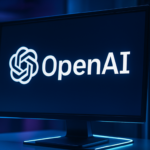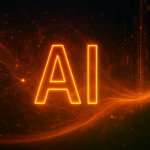Apple (NASDAQ:AAPL) has teamed up with Anthropic to introduce an innovative AI coding platform designed to simplify software development processes for its engineers. This strategic collaboration aims to enhance how Apple’s engineering teams write, edit, and test software code, addressing a growing demand for more efficient coding solutions within the company. The new tool, which Apple has already deployed internally, could potentially be offered to external developers, though no decision has been made yet. The collaborative effort reflects a broader trend in the tech industry where AI-driven tools are rapidly transforming traditional coding practices.
In contrast to prior initiatives by tech giants like Microsoft (NASDAQ:MSFT) and Amazon, Apple’s move into AI-powered coding tools shows a strategic focus on leveraging AI technologies for internal optimization before exploring external market potentials. Previously, GitHub Copilot, a Microsoft-owned AI assistant, was lauded for its commercial success, drawing millions of users and significantly boosting GitHub’s financial performance. Such historical benchmarks highlight a clear opportunity for Apple if it decides to open its platform to third-party developers, potentially mirroring the success of existing market players.
What Does the Platform Offer?
The AI-enabled platform facilitates code generation and modifications via a chat-based interface, streamlining the bug detection and resolution processes. By effectively managing user interface tests and debugging, the software allows engineers to concentrate on complex coding tasks rather than repetitive ones. This efficiency could dramatically increase productivity levels among Apple’s engineering teams and offers a competitive edge by accelerating project timelines.
Will Third-Party Developers Have Access?
Currently, Apple has not publicized any plans to release the platform outside of its internal teams. However, a shift in strategy could see Apple entering a rapidly expanding market where companies like Meta and Google have already established their AI coding assistants. Expanding accessibility could enable Apple to harness additional capabilities from a diverse developer community, which aligns with industry strategies to broaden AI application in software development.
The increasing integration of AI in coding has led McKinsey to project substantial productivity gains within the industry. These advancements hold the possibility of reducing time spent on mundane tasks by automating them, thereby freeing developers to tackle innovation-centric projects. Similarly, technology companies have begun exploring AI’s profitability in this area, evidenced by investment efforts and strategic acquisitions, such as OpenAI’s discussions surrounding the acquisition of Windsurf.
Anthropic’s collaboration with Apple highlights a strategic alignment in leveraging AI to augment existing coding capabilities. With executives highlighting the efficiency advantages brought about by the tool, it’s clear that such technological improvements are geared towards enabling engineers rather than replacing human input entirely. As developers adapt to expanding AI functionalities, more sophisticated applications are anticipated within the software industry.
This focus on AI-enhanced coding tools aligns with insights from industry leaders, such as Oii.ai’s CPO and CTO Bob Rogers, who suggest that AI in software engineering not only accelerates work but creates avenues for innovation by automating rudimentary tasks. By relieving developers of these tedious activities, companies are better positioned to drive strategic initiatives with reduced resource expenditure.
Apple’s initiative reflects an ongoing industry shift towards integrating AI in software development workflows. While the AI-driven platform is still in a preliminary phase, its potential to reshape coding processes is evident. Companies already specializing in AI-assisted coding continue to thrive, offering a benchmark for Apple as it considers expanding its platform’s reach. With AI’s expanding role in software engineering, developers might anticipate further integrations, facilitating both enhanced productivity and creative development avenues across broader technology ecosystems.










